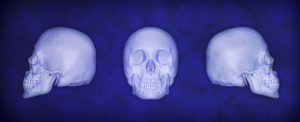← Back to Series This webinar originally occurred on March 28, 2019 Duration: 1.5 hours Overview This presentation introduces research conducted in Uganda at the nexus of forensic science and transitional justice, highlighting a large-scale forensic investigation and human identification…
Category: Anthropology (page 5)
HHRRC – Stable Isotope Analysis in a Humanitarian Context
← Back to Series The webinar originally occurred on March 12, 2019 Duration: 1.5 hours Overview This webinar will introduce stable isotope analysis and its validity as analytical tool in establishing the geographic origin and life history of unidentified individuals…
HHRRC – Isotopes Aiding Identification of Undocumented Border Crosser Human Remains
← Back to Series This webinar originally occurred on February 6, 2019 Duration: 1.5 hours Overview This webinar highlights the theory and methods of isotopic analysis to explain how it can be used to assist in the identification of human…
Success Story: Uncovering Key Details of Skeletal Remains through 3D-ID Software
National Institute of Justice and North Carolina State University Date January 2019 Overview When forensic anthropologists investigate unidentified remains, they look for important clues that can help identify the subject. For example, the size and shape of the skull can…
Humanitarian and Human Rights Resource Center Webinar Series
Overview The Humanitarian and Human Rights Resource Center (HHRRC) of the American Academy of Forensic Sciences (AAFS) with support from the National Institute of Justice’s Forensic Technology Center of Excellence provides needed resources and support to apply modern forensic science…
3D-ID-Geometric Morphometric Classification of Crania for Forensic Scientists Software Best Practices
This webinar originally occurred on August 16, 2018 Duration: 1 hour Overview Attendees will be introduced to the new features of the new software release, how to maximize results, and how to best interpret results for forensic casework application. The…
2018 IAC&ME Training Symposium
Overview This year, the IAC&ME hosted a combined Basic and Advanced Medicolegal Death Investigation (MDI) course in addition to its general conference program in Las Vegas, Nevada. This year’s program provided another excellent opportunity to learn from some of the…
Success Story: Maximizing the Use of Mitochondrial DNA in Identifying Remains and Aiding Missing Persons Casework
National Institute of Justice and the American Registry of Pathology Date April 2018 Overview Mitochondrial DNA (mtDNA) serves as an important tool in situations where traditional nuclear DNA analysis is unlikely to yield probative information. mtDNA sequencing has traditionally focused…
2018 NIJ R&D Symposium Series Forensic Anthropology
← Back to Series Overview Morning Session I: Forensic Anthropology The NIJ Research and Development (R&D) Program funds both basic or applied R&D projects that will: (1) increase the body of knowledge to guide and inform forensic science policy and…
Just Hairy Isotopes
← Back to Just Science Podcast Original Release Date: June 26, 2017 In episode ten of Just Science, we spoke with Dr. Gwyneth Gordon, from Arizona State University. Dr. Gordon and her team have developed methods to use the isotopic abundance…









